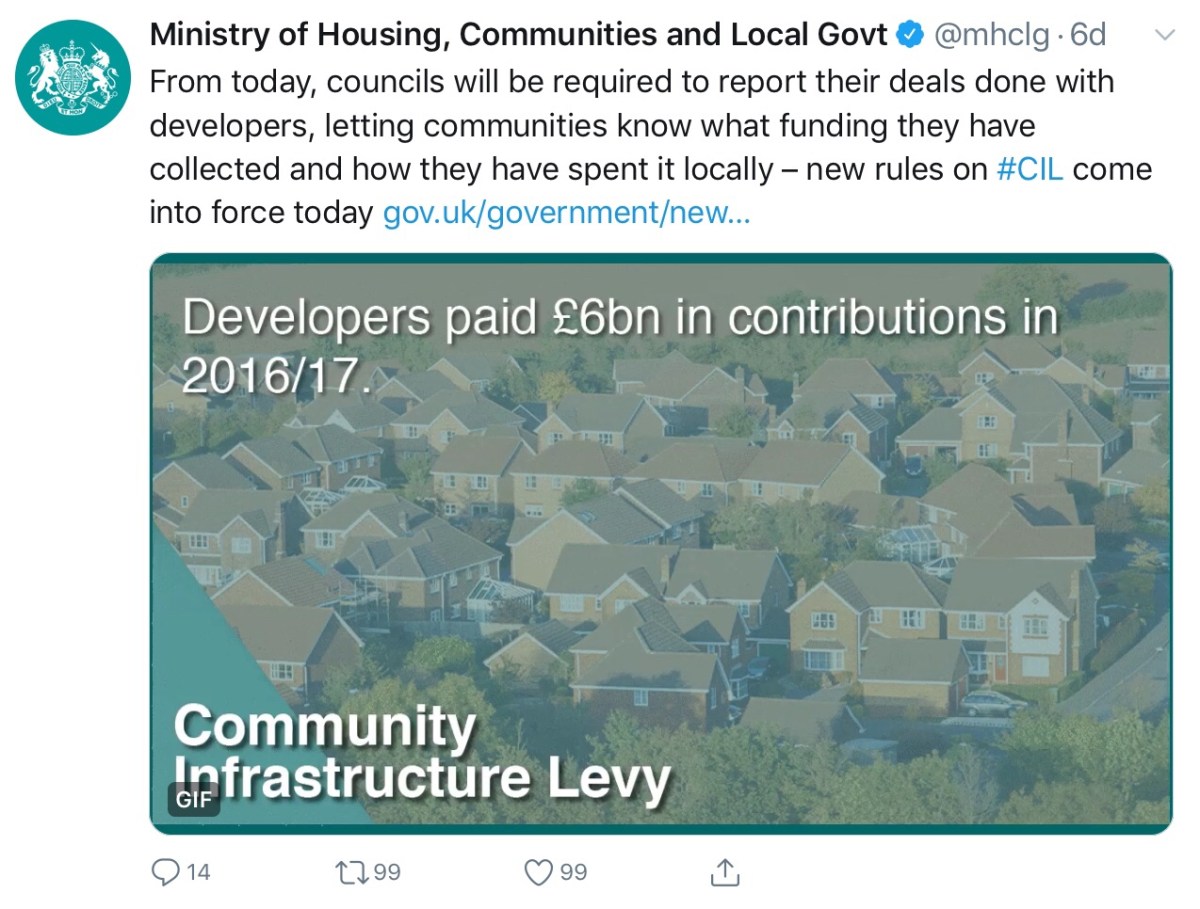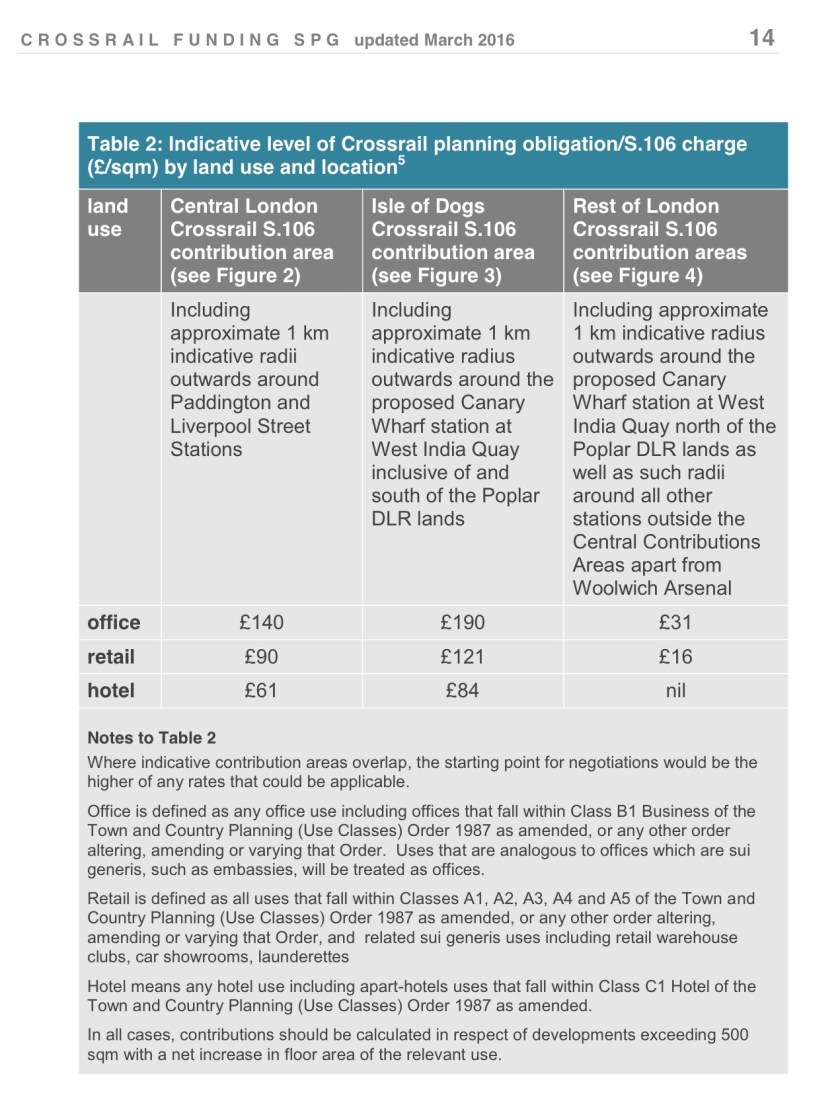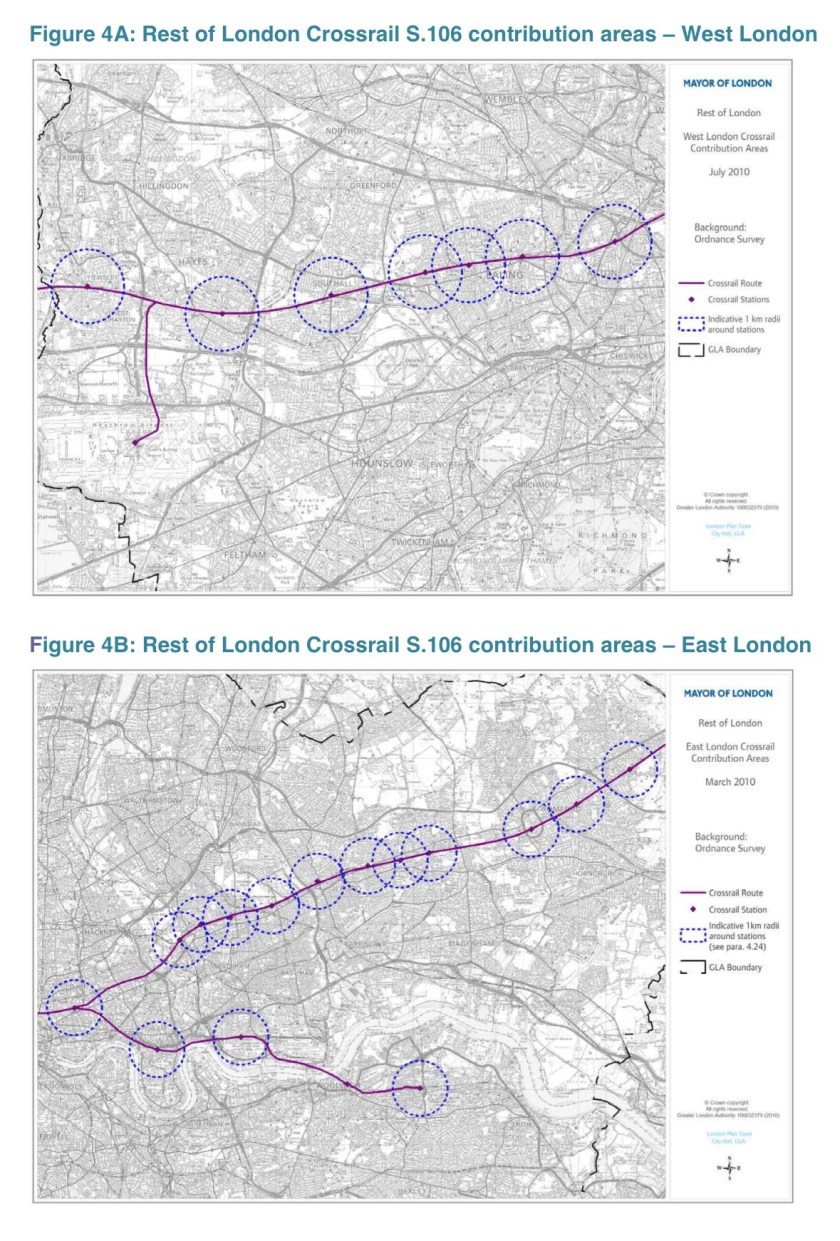Tower Hamlets Council’s revised CIL charging schedule came into effect on 17 January 2020, imposing borough CIL for the first time on its large allocated sites, so you will appreciate its double disappointment at the Secretary of State allowing the Westferry Printworks site appeal, against the inquiry inspector’s recommendations, in a decision letter dated 14 January 2020. The CIL figure could have been up to £50m, according to evidence given at the inquiry on behalf of the appellant.
The scheme is for a “comprehensive mixed-use redevelopment comprising 1,524 residential units (Class C3), shops, offices, flexible workspaces, financial and professional services, restaurants and cafes, drinking establishments (Classes B1/A1/A2/A3/A4), community uses (Class D1), car and cycle basement parking, associated landscaping, new public realm and all other necessary enabling works” at Westferry Road on the Isle of Dogs.
There has been a furious response from the council. At a full council meeting the following day, 15 January 2020, a resolution was passed to examine “all available options, including a judicial review“. The East London Advertiser reports Mayor John Biggs as saying:
“It is a massively tall and dense development. Something of 40 floors on the island is an outrage. By making the decision on Tuesday we also lose a massive sum of money. This development will place a huge impact on the island. It is a scandal and outrageous. We will be doing everything in our power [including] seeking a judicial review.”
The potential impact of borough CIL on the viability of the proposals obviously had been raised by the appellant as a potentially relevant matter, given that it would go to viability. Unsurprisingly, the appellant had sought to include a mechanism within its section 106 agreement for a potential reduction in affordable housing should the Secretary of State’s decision letter be issued after the revised CIL charging schedule had been adopted, a proposal which both the inspector and Secretary of State rejected.
The timing of the decision letter meant that this issue went away – it would have been an interesting one to test, given that the situation often arises where an applicant or appellant is in the hands of the decision maker as to whether permission will be issued before a revised CIL charging schedule comes into effect and why shouldn’t a section 106 agreement mechanism to neutralise the effect be appropriate where the viability appraisal has not taken the potential additional CIL liability into account?
The decision letter was plainly ready to be issued, why should it have been held back?
The appeal had been lodged in relation to an application submitted by Westferry Developments Limited (the owner of the site is Northern & Shell, the development manager is Mace) on 24 July 2018. The appeal was recovered for the Secretary of State’s own determination on 10 April 2019. Tower Hamlets asked for more time to formulate their position in relation to the proposals but this was refused by the Secretary of State, as recorded in a report to a meeting of Tower Hamlets’ strategic development committee on 14 May 2019:
“This report is seeking the authority of the committee for officers to defend an appeal which has been submitted to the Secretary of State by the developer. The Secretary of State has imposed a timetable which requires that this report is considered by the Committee on 14th May 2019 in time for the council to submit a Statement of Case by 22nd May 2019 in order to avoid breaching the imposed timetable and making the authority liable for costs for unreasonable behaviour. As the report had not been written when the timetable was imposed, the Council asked Secretary of State to review the timetable and he has declined. These are the special circumstances justifying the urgency.”
The previous Mayor of London (whatever happened to him?) had intervened and granted planning permission for an earlier scheme for the site in 2016 for “comprehensive mixed use redevelopment of 118,738 m2 including buildings ranging from 2-30 storeys (tallest 110 m AOD) comprising: a secondary school, 722 residential units, retail use, restaurant and cafe and drinking establishment uses, office and financial and professional services uses, community uses, car and cycle basement parking, associated landscaping and new public realm“. That planning permission has been implemented by the demolition of the printworks and works to construct a new basement.
The latest application had been on the basis of an offer of 35% affordable housing, although not policy compliant due to the proposed tenure mix, justified by reference to viability appraisal. When the appeal was submitted, unsurprisingly, given that on appeal the decision maker would expect an updated viability appraisal, that offer was withdrawn and at the time of the 14 May 2019 committee meeting there was just an indication that a revised viability assessment would be submitted and that the revised offer would be less than 35%.
The committee resolved that the proposals would have been refused on the following grounds:
⁃ Townscape and visual impact
⁃ Wind Impact on the Docklands Sailing Centre
⁃ Affordable housing – amount
⁃ Housing mix and choice
The inquiry started on 7 August 2019. This was an important appeal for the council, as can be seen from this July 2019 Facebook post from a councillor, encouraging opposition to the proposals:

In the evidence for the inquiry, the affordable housing offer had been reduced to 21% on the basis of an updated viability assessment.
In this summary that follows I am plagiarising some of an internal note prepared by my Town partner Louise Samuel (into which I may now introduce errors, all mine):
• The inspector accepted that the existing permission should be treated as a fallback, which formed an appropriate basis for assessing an alternative use value for the purposes of arriving at a benchmark land value.
• However, the inspector did not agree with how the appellant had calculated the benchmark land value (see IR 507 on for BLV discussion) and considered that the 21% offer was unlikely to be the maximum reasonable provision for the site. He did not, however, set what the maximum reasonable provision would be.
• Whilst Tower Hamlets criticised the appellant for resiling from its previous 35% offer, the Inspector notes that it was clear that the appellant was responding to the Mayor’s fast-track approach (which requires at least 35%) and so took a commercial view despite the fact that it was not supported by the viability assessment at the time. He concluded that this was not, in itself, a reason to reduce the weight to be attached to the Assessment before him (see para 530 of the IR).
• The Inspector’s view was that the consented scheme provided many of the same benefits but without causing the same harm to heritage assets. Because of the consented fallback, the only benefits that carried weight were those in addition to the consented position.
• The Secretary of State agreed that it is likely that the scheme could provide more affordable housing (“21% does not…represent the maximum reasonable amount of affordable housing”) but still considered that the additional benefits (compared to the consented fallback scheme) of: (a) housing (802 more units of which 142 would be affordable, with a policy compliant tenure split of 70% affordable rent 30% intermediate); and (b) employment during construction, were enough to grant permission. The Secretary of State gave these benefits significant weight whereas the Inspector had attached moderate weight to these benefits. The Secretary of State took into account that “there is no evidence before him of any other scheme which might come forward or what level of affordable housing might be delivered by any such scheme”.
• The Secretary of State considered these benefits to be enough to outweigh harm to important heritage assets (Grade I Old Royal Naval College; Grade I Tower Bridge; and the Greenwich World Heritage Site).
• The section 106 agreement included both an early and late stage viability review, which means that the percentage of affordable housing may increase, albeit the Inspector criticised the limited effectiveness of these.
An interesting decision in that we would need to go back almost two years to find another recovered appeal for housing development which the Secretary of State has allowed in London. Contrast for instance with the 19 July 2019 Chiswick Curve decision letter, appeal dismissed by the Secretary of State against his inspector’s recommendations, where he gave only moderate weight to the provision of 327 dwellings, whereas the Inspector had given significant weight to the housing offer (the decision has been challenged by the appellant – Louise and colleagues acting), and contrast with for instance the 1 Cambridge Heath Road 10 June 2019 decision letter, again an appeal dismissed against his inspector’s recommendations.
Much to chew over for those promoting, or otherwise engaged with, major projects in London.
Simon Ricketts, 18 January 2020
Personal views, et cetera

Image courtesy of Westferry Printworks website






















